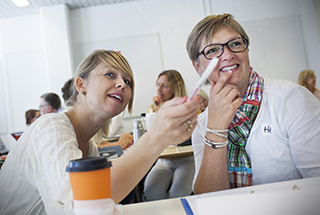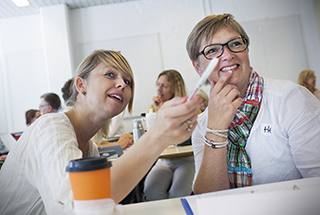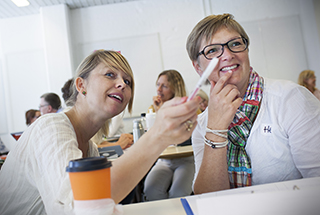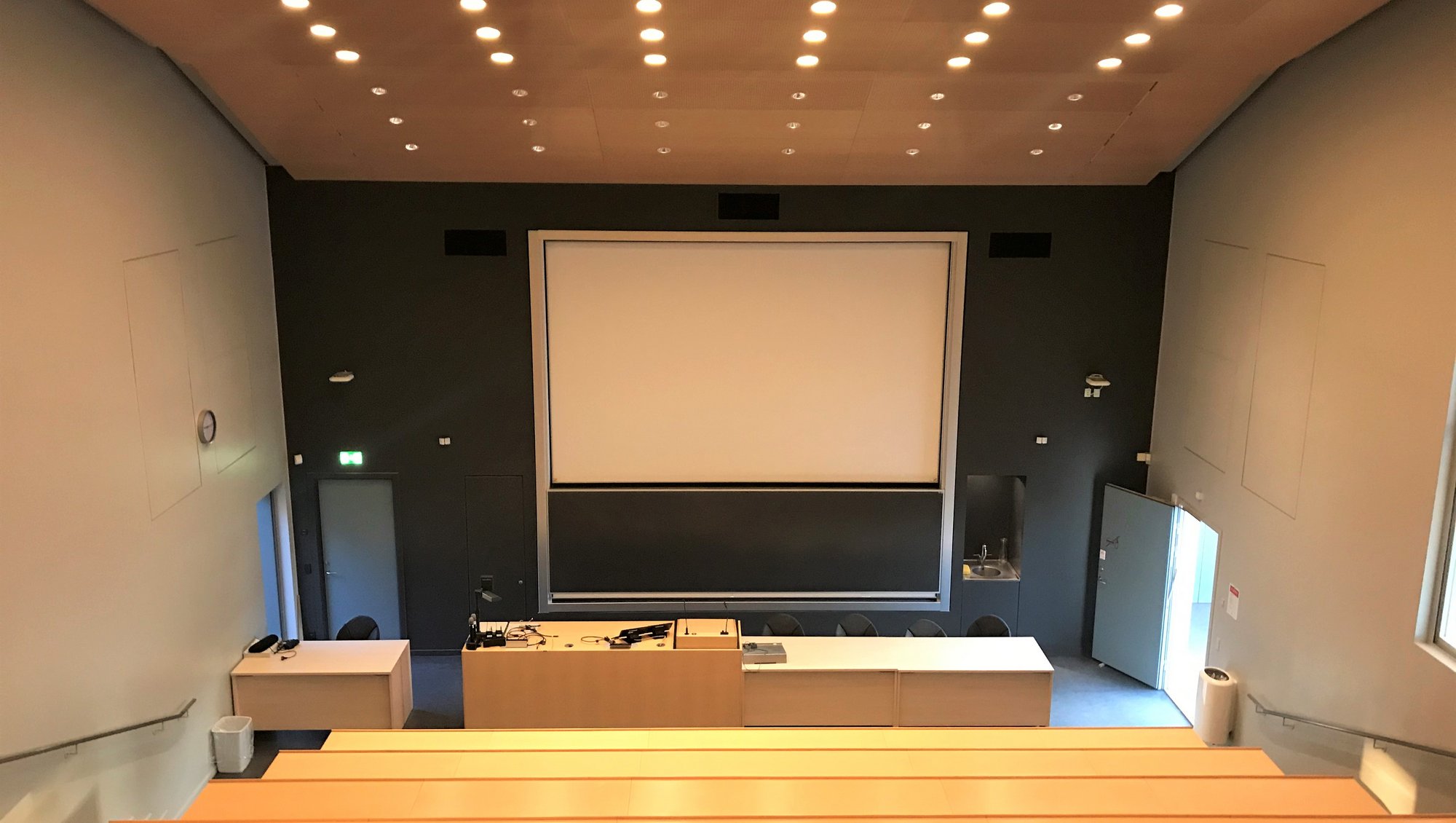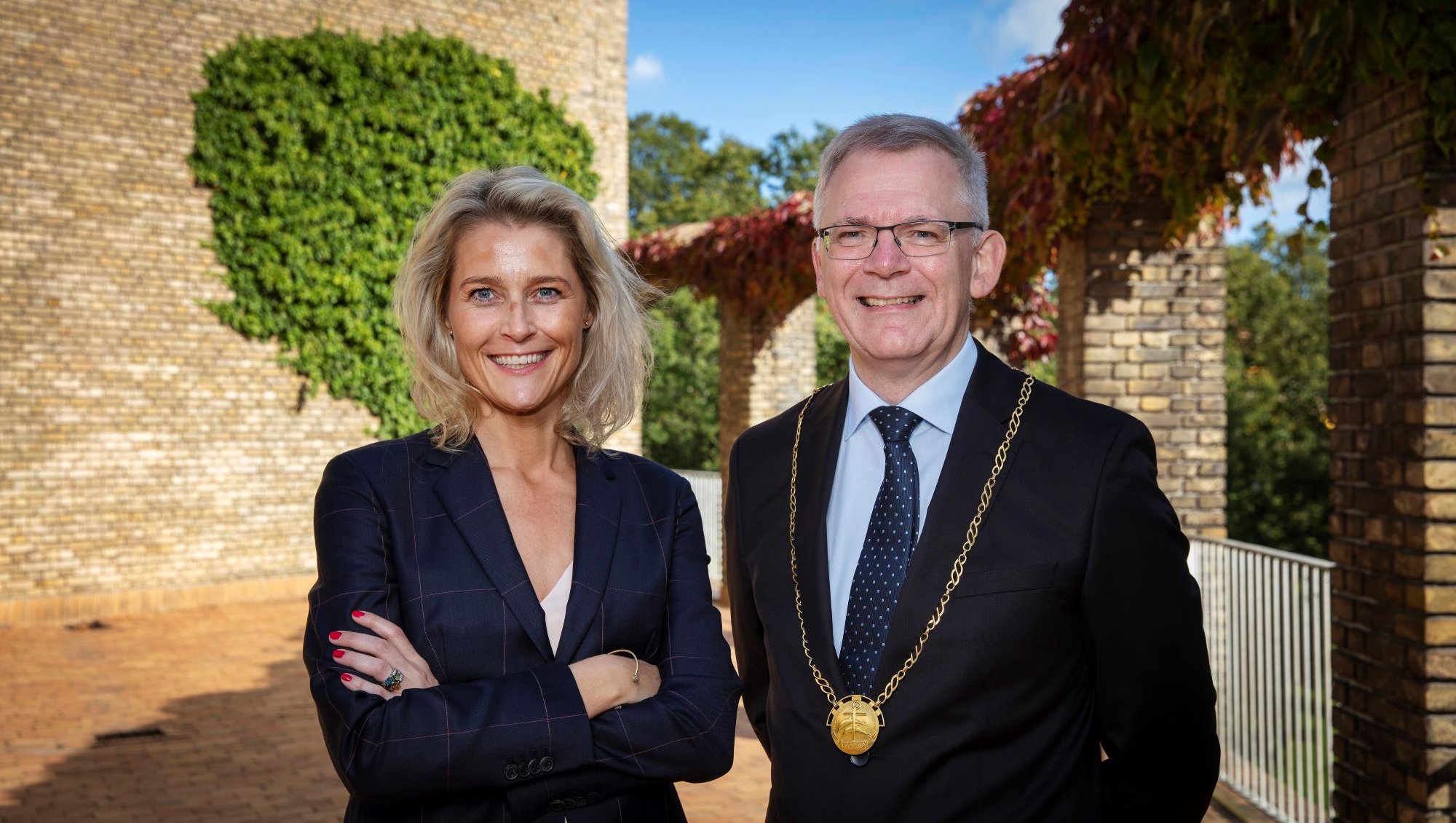New Bjørn Nørgaard sculpture at Aarhus University
On Friday 7 May, a new sculpture by the artist Bjørn Nørgaard will be unveiled in the University Park. The five-meter-high colourful sculpture was donated to Aarhus University by the New Carlsberg Foundation.
A new sculpture has come to Aarhus University. Students, employees and visitors can now see and be inspired by Bjørn Nørgaard's impressive sculpture "Ars - Scientia - Justitia", located at the southern end of the campus in Vennelystparken, in the square between the International Centre and the Aarhus Institute of Advanced Studies (AIAS). Bjørn Nørgaard's sculpture was donated to AIAS by the New Carlsberg Foundation, and it was created in collaboration with the Aarhus University Art Committee.
Bodil Due, the chairman of the Art Committee and former dean of the Faculty of Humanities, is grateful for the donation and the sculpture:
"Art has been a natural part of Aarhus University from the very beginning. Art and science are intrinsically linked and enrich each other, and art can provide a different view of the world than the one we find in textbooks. I hope that students and staff at the university, as well as the people of Aarhus, will visit the new sculpture," she says.
Use the sculpture!
The sculpture consists of a crooked tower surrounded by three human-like pillars. The ‘Ars’ pillar symbolises art and faces the park's lawns and trees. The 'Scientia' pillar symbolises science and faces the university buildings, while the 'Justitia' pillar, symbolising the judiciary, faces the city. Bjørn Nørgaard was inspired the researcher H.C. Ørsted, who believed that these three elements constituted the pillars on which a modern society is based:
"The sculpture is a reminder that any power structure must be subject to criticism and opposition from art, research and an independent judiciary," says Bjørn Nørgaard, who encourages visitors to the University Park to use the sculpture: sit on it, lean against it.
Stine Høholt, board member of the New Carlsberg Foundation, says that the sculpture is a noteworthy piece in Bjørn Nørgaard's already impressive oeuvre:
"Despite its large and soaring scale, the sculpture wants to meet us at eye-level and it wants us to reflect on the development of our society and, not least, on the institutions that guarantee our democracy. That's why it's a good match for the university," she says.
Art and science are inter-related
Employees at the Aarhus Institute of Advanced Studies, which neighbours the sculpture, are delighted with the new piece and a meeting has been planned between the researchers at the institute and Bjørn Nørgaard. Søren Rud Keiding, director of the Aarhus Institute of Advanced Studies says:
"Artists and researchers are actually very closely related. Using their knowledge and skill, researchers and artists challenge the status quo and point us all in new directions. That’s why we at the Aarhus Institute of Advanced Studies are so delighted with the new sculpture, and why we’re very much looking forward to our meeting with Bjørn Nørgaard. At the meeting, we’ll discuss how imagination and abstraction are used as tools in both art and research."
Aarhus University is holding a small, internal inauguration reception attended by Bjørn Nørgaard on Monday 10 May from 15:00 to 16:30 at the sculpture. Registration is necessary due to Covid-19 restrictions and for catering. Tobias Juel Frandsen: tojf@au.dk/93521180, no later than 12 noon, Monday 10 May.
Read more about Bjørn Nørgaard's Ars - Scientia - Justitia sculpture
Bjørn Nørgaard (b. 1947) has been one of the most notable figures on the Danish art scene since his debut in 1965. Among other things, he is known for his 17 tapestries on Danish history, which hang at Christiansborg Palace. The tapestries were a gift to Queen Margrethe II on the occasion of her 50th birthday. Bjørn Nørgaard also designed the queen’s future tomb in the chapel of Saint Birgitta in Roskilde Cathedral, and large number of sculptures erected in cities across Denmark. Bjørn Nørgaard became well-known in Denmark after his art happening back in 1970, during which he slaughtered a horse in a field near the village of Kirke Hyllinge in Hornsherred as a protest against the Vietnam war.

